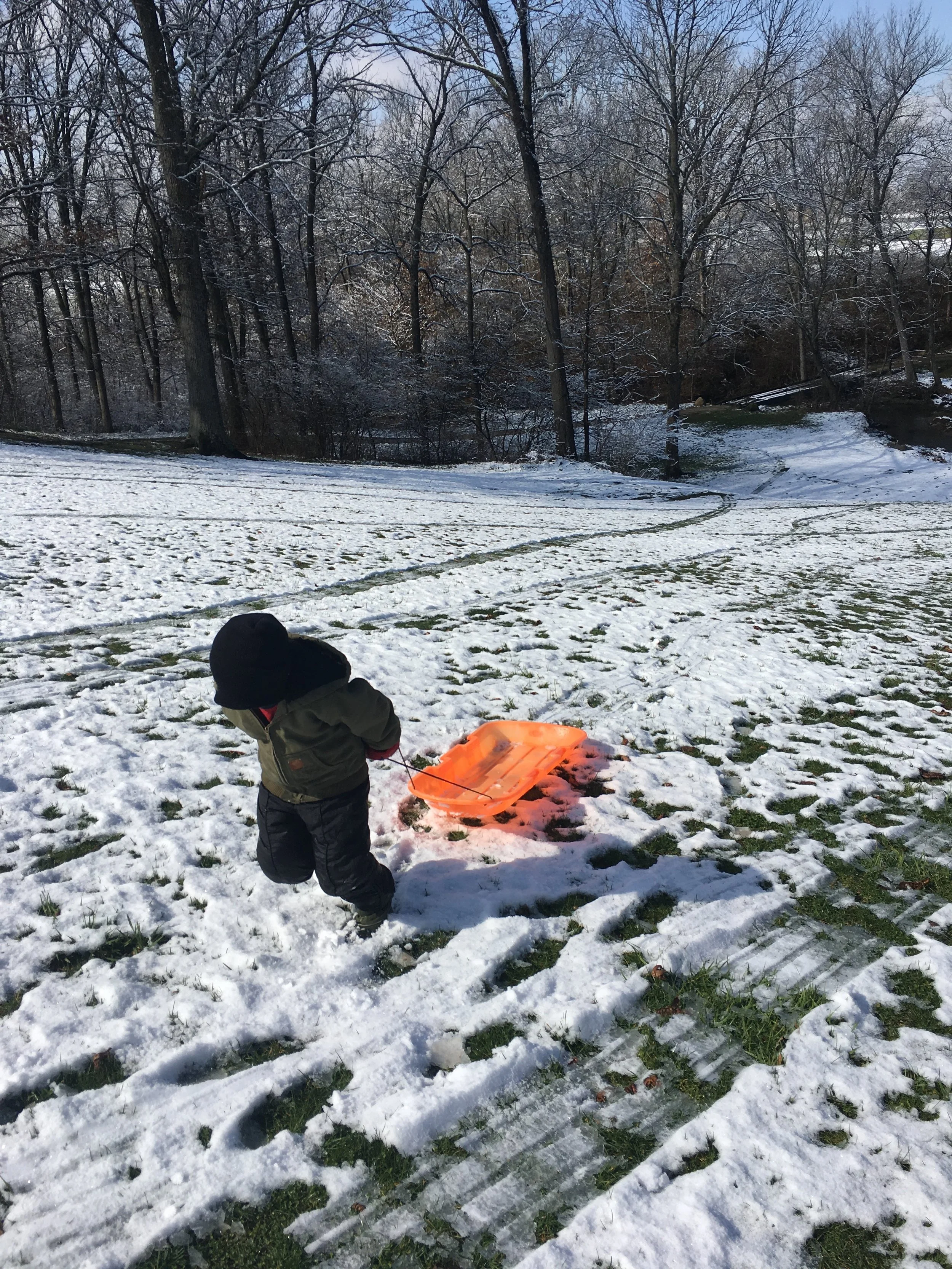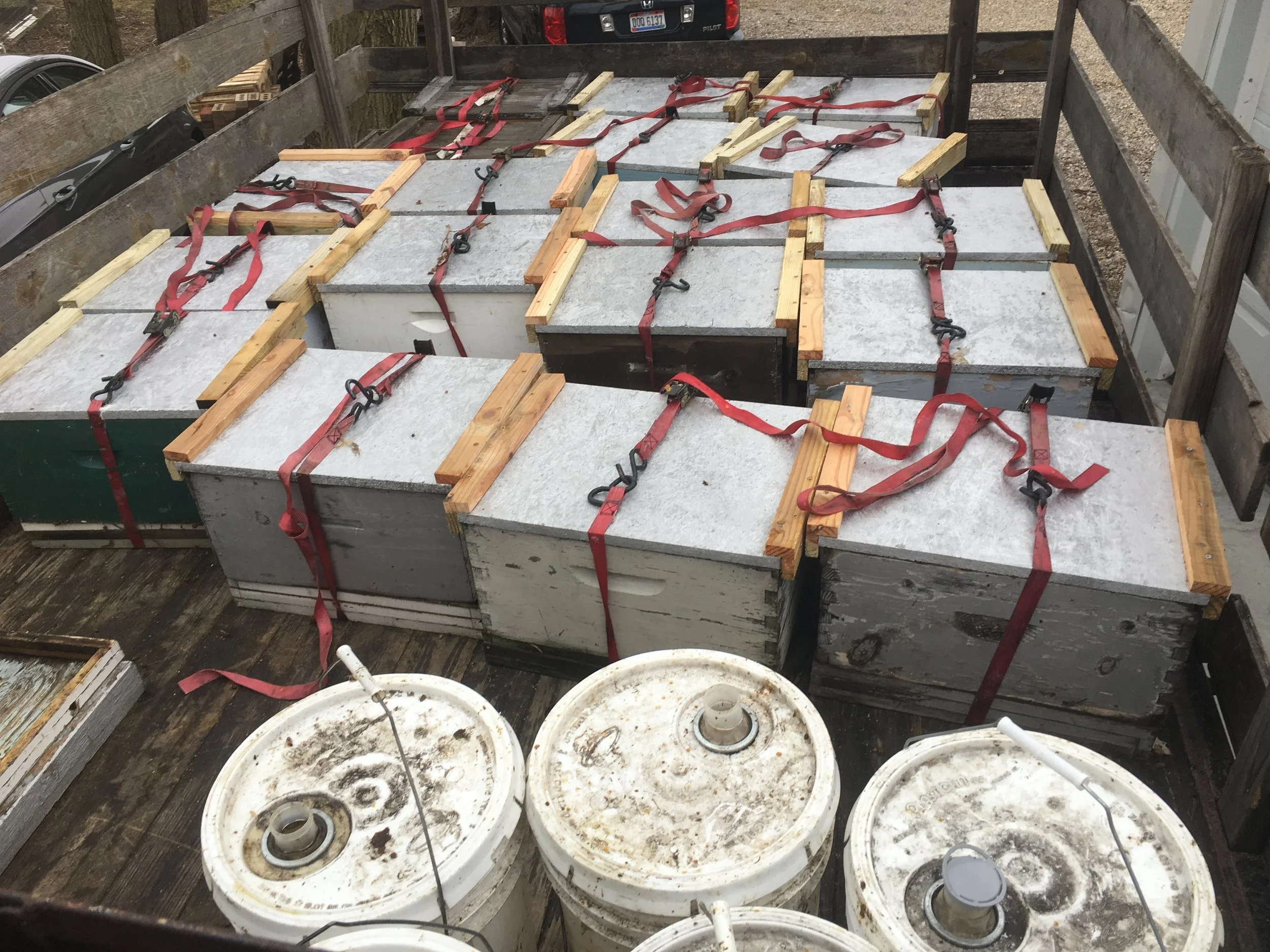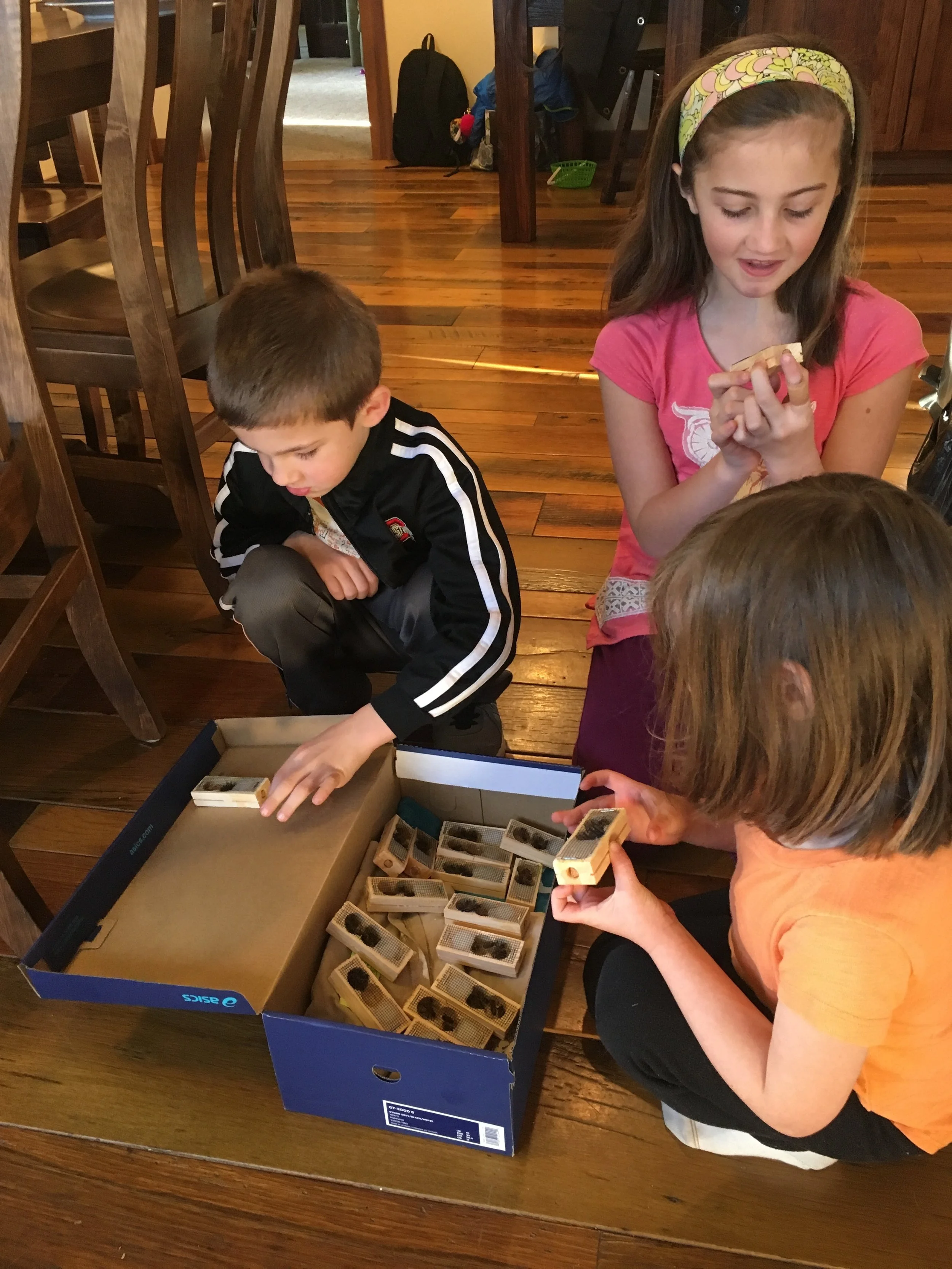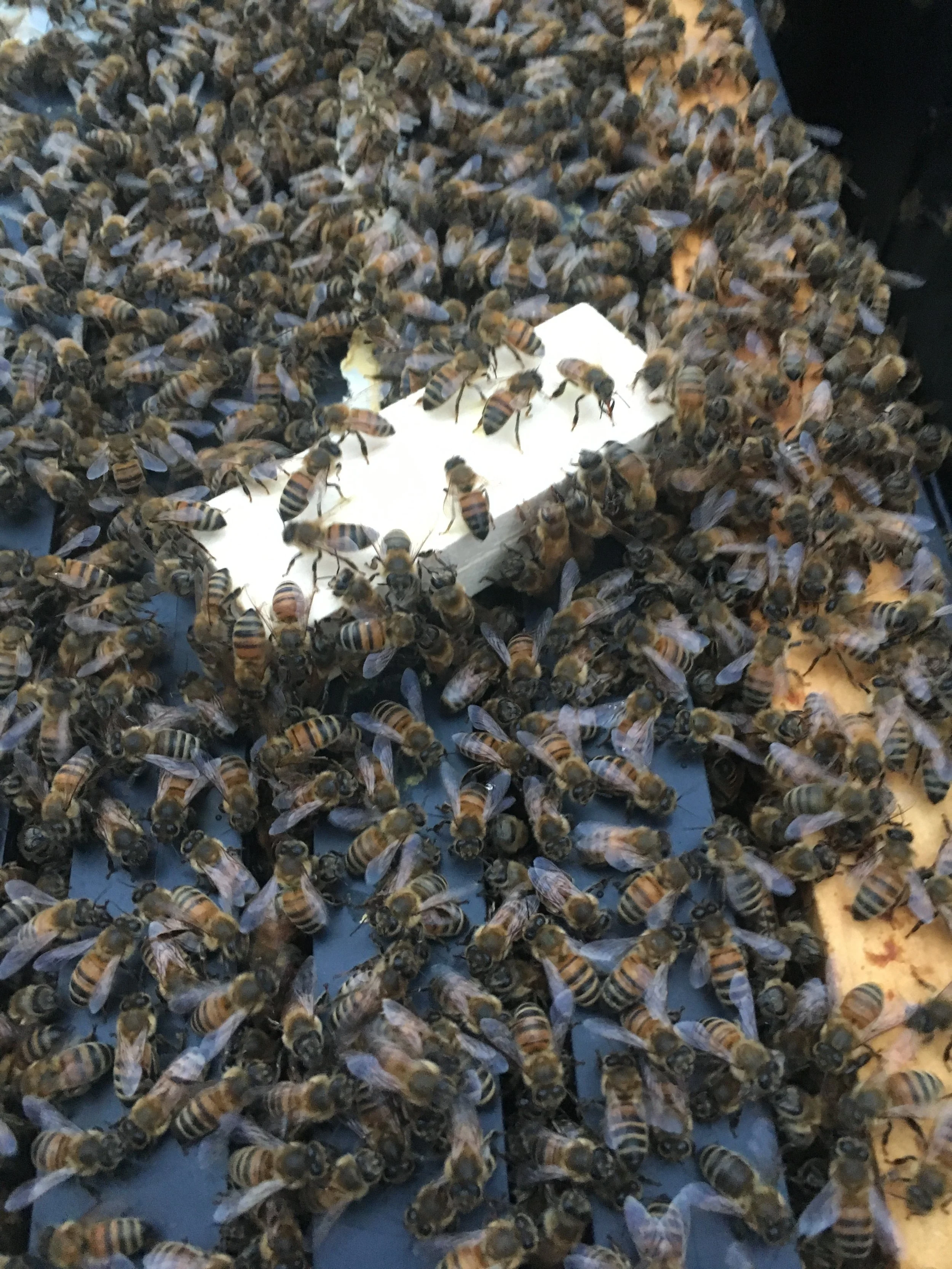First Splits
Jayne Barnes
-Posted by Isaac
What a fun week we've had.
Here's our Monday starter:
Followed by a Tuesday teaser:
And after that, things took a turn for the worst.
Tornados, floods, sleet and snow throughout the state. Maybe my whining a month ago was too early? In fact, as I write, I'm once again looking out across our snow covered yard. What a spring! Is this April 7th? It's almost laughable. I complained my way through last week's post, and I told Jayne I'd try to stay positive this week. But it's just so damn hard.
It's hard to stay positive and it's hard to make splits with this horrible weather. But no matter, a little bit is better than nada. We're going to start with a few and go from there. We're doers here, right Honey?
I mentioned making these 20 splits in the rain last week. For this week's post, I thought I'd show you the steps. A little tutorial. But keep in mind, there are about a hundred ways of splitting a hive, and I'm no expert with any of them. Take notes on what you like, and discard what you don't.
First, you need a strong hive. Hard to find in this, our never-ending-winter. But they are out there. By late April, hopefully, there should be many many more.
You want brood in the top and bottom box. Preferably four frames in the bottom. A hive with four or five brood frames will still be big enough to make you some spring honey a month and a half from now. Or even split again in May.
Second, you want to isolate the queen. You don't need to find her, just know which box she's in. I like to accomplish this by shaking all the bees into the bottom box, then putting a queen excluder between the boxes.
The problem with this is that it requires another trip to the yard. If you find the queen, you can do it all in one trip.
Next you need to gather your equipment. You're doubling your hive count, so you'll need to basically double everything.
And oh yeah, don't forget the feed.
When you get back in the bee yard a few days later, you can start pulling brood from that top box. I like to make my early nucs with two to three frames of brood and a frame of honey.
I then replace the pulled frames with foundation and give the original hive a hefty slurp of feed.
Don't forget to take out the excluder!
It's too early to make your own queens in Ohio, so you have to order them. By mid May, you can try your hand at queen breeding. Unfortunately, this timing doesn't work for us. Most of our nucs are sold by May. But I still try my luck at home bred queens later on.
The first batch is a big deal in this household.
They don't stay in a shoe box for long.
I usually wait a couple days with a queenless nuc before putting in a new queen. Possibly better acceptance? I'm not sure if this is true, but it's what I've been told. Anyway, what's the rush?
A week later, you can check to see that your queen is out of her cage and all is well. You may even find eggs, but sometimes it takes a little longer.
A little protein and a touch of syrup doesn't hurt.
And off they go!
The willows (in the background) will be feeding the bees a week from now. The dandelions and the purple deadnettle (presently beneath the snow) are coming on strong. If we could only get a little heat... stay positive!










